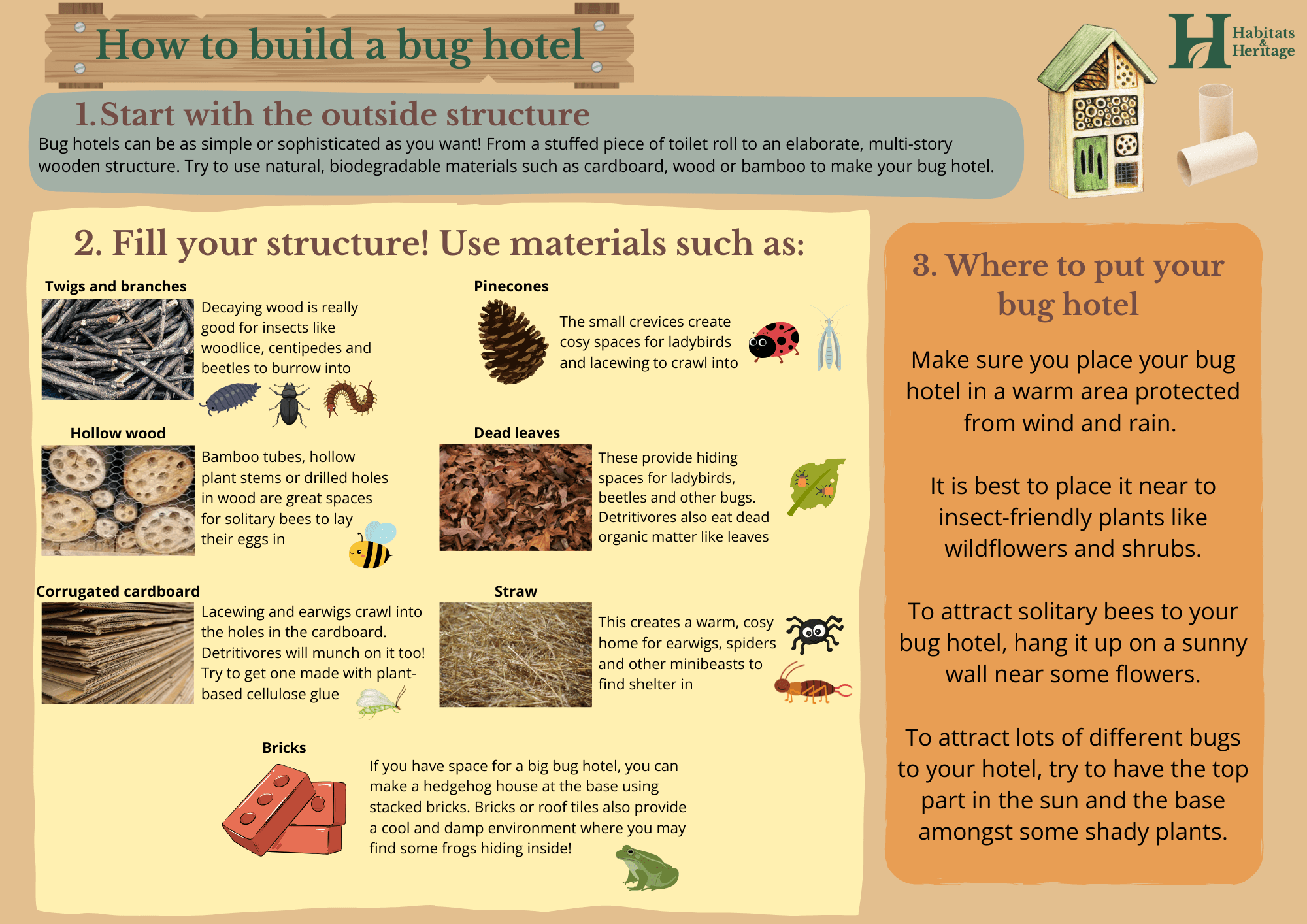Bug hotel challenge
Bug hotels mimic natural habitats for minibeasts, providing them with sheltered spaces to nest, breed and hibernate.
Insects and invertebrates are in decline in the UK but are very important for natural pest control, pollination, and to break down natural materials into nutritional soil.
By making a bug hotel, you can encourage biodiversity into your garden and help our environment.
The Mayor's Charity, Habitats & Heritage have created the below instructions to help you build your very own bug hotel. If you're aged 12 or under, get a parent or guardian to send us a picture of your creation for the chance to win tea with the Mayor! You can find the email address at the bottom of this page.
How to build a bug hotel

1. Start with the outside structure.
But hotels can be as simple or as sophisticated as you want! From a stuffed piece of toilet roll, to an elaborate multistory structure, Try to use natural, biodegradable materials, like cardboard, wood or bamboo to make your bug hotel. Tip: download the image or open it in another window for a better look.
2. Fill your structure!
Use materials, such as:
- Twigs and wood. Decaying wood is really good for insects like woodlice, centipedes and beetles to burrow into.
- Hollow wood. Bamboo tubes, hollow plant stems or drilled holes in wood are great spaces for solitary bees to lay their eggs in.
- Corrugated cardboard. Lacewing and earwigs crawl into the holes in the cardboard. Detritivores will munch on it too! If possible, use cardboard made with plant based glue.
- Pinecones. The small crevices create cosy spaces for ladybirds and lacewing to crawl into.
- Dead leaves. These provide hiding spaces for ladybirds, beetles and other bugs. Detritivores also eat dead organic matter like leaves.
- Straw. This creates a warm, cosy home for earwigs, spiders and other minibeasts to find shelter in.
- Bricks. If you have space for a big bug hotel, you can make a hedgehog house at the base using stacked bricks. Bricks or roof tiles also provide a cool damp environment where you may find some frogs inside!
3. Where to put your bug hotel.
Make sure you place your bug hotel in a warm area protected from wind and rain. It is best to place it near to insect friendly plants like wildflowers and shrubs.
To attract solitary bees to your bug hotel, hang it up on a sunny wall near some flowers.
To attract lots of different bugs to your hotel, try to have the top part in the sun and the base amongst some shady plants.
For competition entries, photographs can be sent to climate@kingston.gov.uk along with the entrant's name and age.